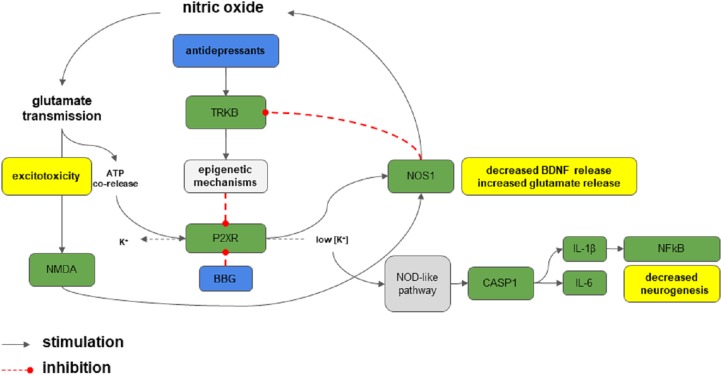Figure 3. P2RX7 signaling in stress.
Stress elicits massive glutamate and ATP release. The activation of P2RX7 receptors by ATP activates nitric oxide (NO) production, which provides a positive feedback to glutamate release. This process leads to excitotoxicity. P2RX7 activation also promotes potassium efflux, stimulating the nucleotide-binding, leucine-rich repeat, pyrin domain containing 3 (NLPR3) inflammasome and caspase 1 (CASP1), production of interleukins (IL-6 and IL-1β), and activation of NF-κB exacerbating neuroimmune response, axonal degeneration and cell death, and inhibition of neurogenesis. The whole process is positively fed by the decrease in BDNF signaling promoted by P2RX7. Antidepressants, putatively through TRKB-dependent epigenetic mechanisms could counteract such effects by decreasing P2RX7 expression. Green boxes: proteins or targets involved; blue: drugs or compounds; gray: process or pathways: red: deleterious effects.

